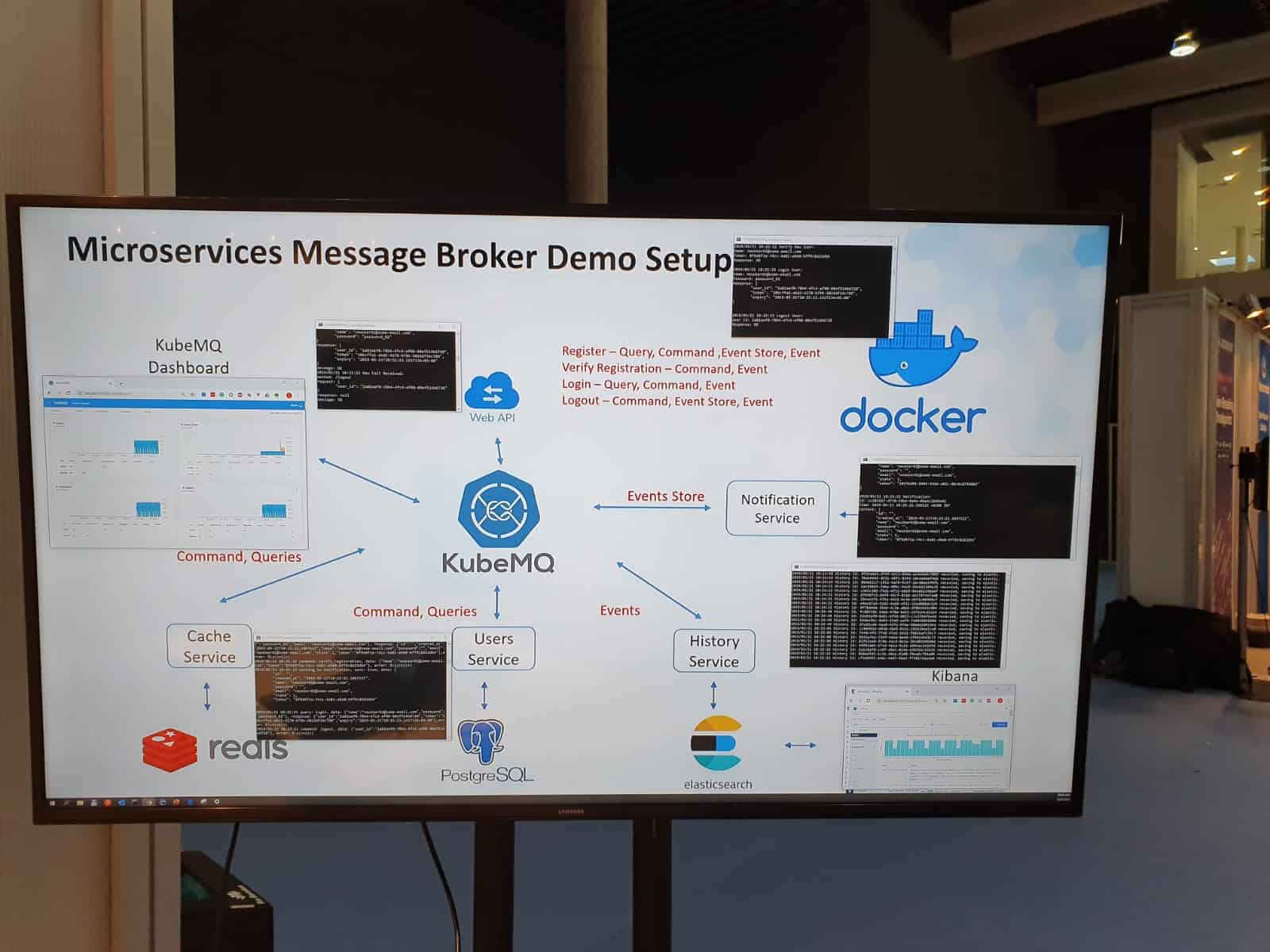Kafka vs KubemQ
Kafka vs KubeMQ | Which is best for Microservices and Kubernetes?
You have decided to use microservices, this is also a good time to consider which messaging system to use for your services to communicate with each other. Using containerized microservices will usually end up with Kubernetes as the orchestration platform, thus your messaging system selection should consider the suitability to live inside Kubernetes and run efficiently as a docker container.
1. Kubernetes Deployment
KubeMQ – Ultra-Simple & Can Be Deployed by any DevOps Member Level
KubeMQ is delivered by default in a preconfigured cluster for Kubernetes, which makes it ultra-simple and fast to deploy a fully-operational cluster to production. It takes about five minutes to deploy. To simplify and expedite deployment in Kubernetes, KubeMQ offers a wizard that generates a ready-for-deployment YAML or HELM chart. Docker images are also available for those who want to try KubeMQ on their own computer before deploying a cluster.
A significant challenge that companies face is upgrading from a dev environment to a production environment. Usually, this upgrade is a non-trivial process that takes time and involves additional settings and code changes. The KubeMQ upgrade from dev to production is transparent, with no need for additional configurations or code changes. This saves costly time and minimizes bugs.
Kafka – Challenging, Requires Expert Help
As Kafka was not built with Kubernetes deployment in mind, production-ready cluster deployment requires significant work and often proves very challenging.
A statement from the developers of Kafka describes some of its challenges:
“Kafka is a stateful service, and this does make the Kubernetes configuration more complex than it is for stateless microservices. The biggest challenges will happen when configuring storage and network, and you’ll want to make sure both subsystems deliver consistent low latency.”
“The main lesson here is that you can run Kafka on Kubernetes successfully if, and only if, you have the cooperation of skilled storage and network teams. If you don’t have those, you will run into trouble.”
2. Cluster Size
KubeMQ – Lightweight and Small Footprint Container
The size of each container is 30MB, which makes it natural to implement in a microservice architecture. The size of a cluster of three containers is 90 MB. There is no need for the installation of additional components such as Zookeeper in Kafka.
Kafka – Heavy and Resource-Demanding
To achieve a cluster, both Kafka and Zookeeper should be deployed. Each Kafka container weighs about 600 MB—20 times the size of a KubeMQ container—and each Zookeeper container weighs about 100MB, totaling 2.1GB (three Kafka containers + three ZooKeeper containers) compared to 90MB with KubeMQ.
3.Need for Speed
KubeMQ – Faster than Kafka
KubeMQ was written in GO to maximize computer resources and to work smoothly with Kubernetes. We benchmarked KubeMQ vs Kafka using a cluster with 1k message size and sent one million messages with the same hardware specs. KubeMQ beat Kafka by 20% in speed.
4. Ease of Use
KubeMQ – Effortless and Developer-Oriented
KubeMQ – designed with ease of use in mind to increase the speed and productivity of development teams. For developers, it is highly simple to begin using KubeMQ.
Usable by developers or even by admins, KubeMQ does not require the creation of any objects besides the channel. There is no need for grouping, exchanges, brokers, or any other additional settings, as everything is done automatically by KubeMQ. KubeMQ uses Raft, which prevents the need to maintain a ZooKeeper cluster.
Kafka – Complex and Requires Dedicated Personnel
The tech team needs a combination of Java and Scala skills to support development with Kafka, as well as significant Java technology in-house.
Kafka requires the definition of any service to join a channel in advance by the administrator. Moreover, creating a new channel requires additional settings by the admin, and this is not an on-the-go process. Multiple levels of settings and complexity are required to set up Kafka, and to use it effectively requires advisors and consumes significant time from development teams.
ZooKeeper is mandatory and requires additional hassle, configuration, and knowledge to maintain.
5. Messaging Patterns
KubeMQ – All Patterns Supported
Developed for the widest range of use cases, KubeMQ is a message broker and message queue that supports Pub / Sub with or without persistency, Request / Reply (sync, async), at least one delivery, streaming patterns, and RPC.
Kafka – Only Async Patterns
Kafka supports Pub / Sub with persistency and streaming. RPC and Request reply patterns are not supported.
6. Cloud Native Integrations
KubeMQ – Off-the-Shelf Integrations, CNCF-Oriented
KubeMQ is a modern cloud-native message broker and message queue that is integrated with CNCF-leading projects. Among the apps integrated with KubeMQ are Prometheus and Grafana for monitoring, Fluentd, and Elastic for logging, and Jaeger and Open Tracing for tracing integration. Additional integrations are available, including DataDog, Loggly, AWS, Honeycomb, Stackdriver, and Zipkin. Moreover, companies can connect additional tools using the KubeMQ plugin system.
Kafka – Requires Additional Configurations and Adjustments
Kafka is not a native element of the CNCF landscape, and integrations with tools from the CNCF are available on a case-by-case scenario and must be configured separately. Some tools have “shortcuts” to establish integration (that have been developed by the community), yet each one requires developers to work with separate guides that include multiple steps to complete the integration process, and which lack support.
Summary of the comparison:
Kubernetes Deployment
KubeMQ – Ultra-Simple & Can Be Deployed by any DevOps Member Level
Kafka – Challenging, Requires Expert Help
Cluster Size
KubeMQ – Lightweight and Small Footprint cluster 90MB
Kafka – Heavy and Resource-Demanding 2.1 GB
Need for Speed
KubeMQ – Faster than Kafka
Ease of Use
KubeMQ – Effortless and Developer-Oriented
Kafka – Complex and Requires Dedicated Personnel
Messaging Patterns
KubeMQ – All Patterns Supported
Kafka – Only Async Patterns
Cloud Native Integrations
KubeMQ – Off-the-Shelf Integrations, CNCF-Oriented
Kafka – Requires Additional Configurations and Adjustments
